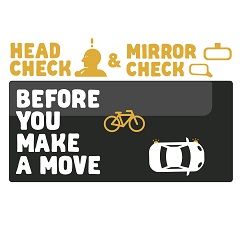When passing or overtaking
Be patient and keep your distance from bike riders, at least one metre on roads with speed limits up to 60km/h, and at least 1.5 metres if you’re traveling over 60 km/h.
After overtaking, make sure you are well clear of the bike rider before moving back.
The minimum passing distance is measured from the widest part of the combination of vehicle and trailer being towed.
If drivers cannot pass the bicycle rider safely, drivers need to slow down and wait until the next safe opportunity to do so.
For large vehicles such as when towing boats, horse floats, caravans and ‘tradie’ trailers, as well as heavy vehicles, such as trucks and buses, a safe distance may be more than the 1m or 1.5m minimum. Therefore, drivers may need to slow down, sit behind and wait for a safe place to pass.
Be patient and keep your distance from people who ride bicycles.
Why is this rule important?
- Providing enough space for bicycle riders allows them some room to swerve if they come across a parked car door opening in their path, or some debris or a hazard on the road.
- Larger vehicles passing closely can create wind turbulence that can make them lose their balance.
- Leaving the required amount of passing space also makes bicycle riders feel safer and more at ease while sharing the road with motorised vehicles.
Overtaking
Drivers can cross solid single lines, double lines or centre lines when overtaking people who ride bicycles, when there is a clear view ahead and it is safe to do so. If it’s not safe you need to wait until you find a suitable place to pass.
Before overtaking look twice - look ahead for oncoming traffic including motorcyclists and bicycle riders approaching on the other side of the road.
After overtaking, make sure you are well clear of the bicycle rider before moving back, make sure you can see them in your rear view mirror.
If drivers cannot pass the bicycle rider safely, divers need to slow down and wait until the next safe opportunity to do so.
Drivers can cross single yellow lines into tram lanes to pass bicycle riders, only when the way is clear and it is safe to do so, they must not get in the way of any approaching trams.Drivers must not enter tram ways and must not cross double yellow lines or any raised separation on the edge of tram ways.
Where do the new rules apply?
The minimum passing distance rules apply whenever a motorised vehicle is passing a bicycle rider, including:
- When bicycle riders are riding in a bicycle lane (including painted white lines, temporary separation like a pop up bike lane, and permanent separation eg kerbing separating the bicycle lane).
- When bicycle riders are riding two abreast on the road (which they are legally allowed to do)
Where bicycle riders ride to the outside of the bike lane when riding past park cars, they are often trying to avoid the car door zone, to keep well clear of any unexpected car doors opening.
Bicycle riders have the option to do a hook turn at any intersection, unless signed otherwise. This can be a safer option as they don’t need to cross into the middle of the road to turn right.
At intersections
- Watch out for bike riders at intersections and roundabouts.
- Bicycle riders have the option to do a hook turn at any intersection, unless signed otherwise.
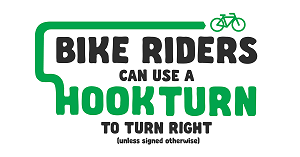
- Drivers must stop before a bike box when stopping at a red light. Stop before the first white line, and when the lights turn green, give the bike rider a head start.
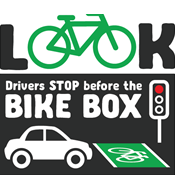
On local roads
- Drive cautiously and watch out for bike riders in residential streets.
When changing lanes or merging
- Do not drive in bicycle lanes.
- Give way to bike riders in bicycle lanes if you are turning across the lane (including slip lanes).
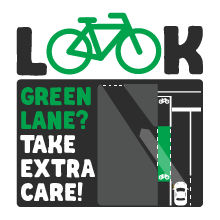
• Give way to anyone travelling in a lane you are moving into, including bike riders.

- When merging, give way to anyone already in the part of the lane you are merging into, before moving across.
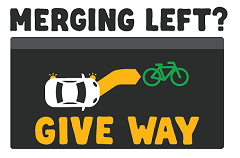
- Indicate when pulling out, changing lanes or turning, so bike riders know your intentions.
When opening car doors to get out of your car
- Check behind you before opening your car door, use your mirrors and do a head check.
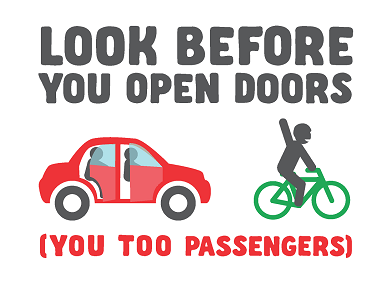
- View our video Checking for cyclists and motorcyclists for more information about how to be aware of cyclists when opening your car door.
- Doing a head check and side mirror check helps you see into your blind spot before you change lane or turn.
